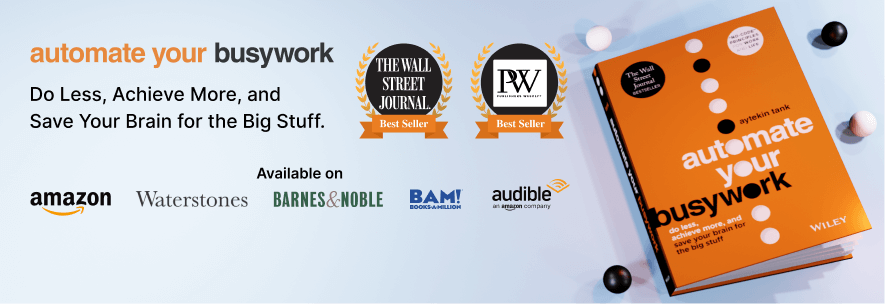I often talk to other entrepreneurs at early-stage startups who want to do it all. They want to disrupt industries, to change the way we do things, to shift cultural paradigms. They are hungry and ambitious, energized and ready to go.
We have one great conversation, then I never hear from them again.
It’s not that they had a bad idea. In fact, they had a dozen ideas that could work. That’s the problem.
Many entrepreneurs want to build the next Google or Amazon (I’ve written about why that’s a bad place to start). They compare themselves to companies with thousands of employees and billions of dollars of revenue, forgetting that Google started out as a simple search engine and Amazon initially just sold books. Both companies started out by doing one thing well — and not even a particularly novel one.
When a company tries to do too much too soon, they spread themselves too thin, muddling their purpose and overextending resources. They end up with a handful of okay products or features instead of one done really well.
These companies fail because no one gets excited about a product that is just okay. “Okay” doesn’t delight users or disrupt markets. But “okay” is what you get if you pursue every idea that you think might have traction.
In building Jotform, I focused on doing forms well. It’s not that I didn’t have any other ideas over the last thirteen years, but I recognized them for what they were: distractions. I kept my attention on the idea that made me want to start a company in the first place and moved everything else off my plate.
Being “busy” is wasting your time
Overcommitting is a common side effect of productivity culture. Often, we measure our days on what we’ve accomplished, how many meetings we’ve had, and how busy we feel. We’re measuring our lives by quantity, emphasizing output over true presence and engagement.
Working all the time is now a status symbol. It used to be that the richer and more successful a person was, the less they worked. That is no longer true. Now, by bragging about how busy we are, we are signaling that our time has market value. We’ve internalized that in order to be successful, we have to be constantly running from one thing to the next, our schedules jam-packed with events and phone calls. This culture shift shows itself everywhere from holiday cards to Super Bowl commercials.
But, this busy-ness has nothing to do with actual work. It has to do with how we want to be perceived. We want to feel like our work is meaningful and for others to see us as successful. By answering emails at all hours and saying “yes” to every opportunity that comes our way, we are projecting to ourselves and others that what we do matters.
But, that perception does not always align with reality. Overcommitting makes us less engaged and more stressed, negatively affecting us at home and at work. Not everything that fills our plates reaches the threshold of good use of our time. How do we figure out what’s important and what’s getting in the way?
Clear your plate
Focus drives momentum. By being specific about what I was trying to achieve with Jotform from the beginning, I was able to grow my company in a sustainable, scalable way. I wasn’t concerned about chasing trends or landing at the top of TechCrunch. I knew what I wanted to build and how I wanted to build it, putting customers first and prioritizing stability.
But it’s more than saying “yes” to one thing. We have a finite amount of time and resources. Saying “yes” to one thing means saying “no” to everything else. So, how do we decide what’s worth saying “yes” to?
Writer Eloisa Amezcua uses a rubric she devised with her husband to decide what commitments to agree to. The rubric includes practical elements, like financial impact and geographic feasibility, but also asks more value-oriented questions like,
“Am I serving the community I want to serve?”
A standard set of criteria allows you to take a ten-thousand-foot view of a decision at the moment. It’s not about what you do or don’t want to do but about what makes sense based on your goals. Our brains don’t always have our best interests in mind while making decisions. They’re impacted by perceived rather than actual risk and reward, as well as stress and anxiety. By using a rubric, you are removing some of the emotion from the process.
Audit your life
Whenever I’m feeling overwhelmed, I take a quick audit of my commitments. Some, like the ones to my family, are non-negotiable. For those where I have some flexibility, I examine them closely to see if the commitments are worth my time and resources.
I can tell I’m losing focus if I can’t easily explain what I’m doing or why I’m doing it. To paraphrase Albert Einstein, if I can’t explain it simply, I probably don’t understand it well enough.
I’m a lucky guy. Most of the time, I’m making choices between two good options. But, that means I have to apply a more rigorous set of criteria to make sure I’m not overcommitting myself. I keep what’s essential and eliminate the rest.
Remember: “No” is a complete sentence. While it’s difficult to turn down new projects, having too much on your plate will lead to burnout. By saying “no” to commitments that don’t align with your goals and values, you’re making time and space for things that will be more impactful for your long-term goals. You’re not being negative; you’re being strategic.















Send Comment: